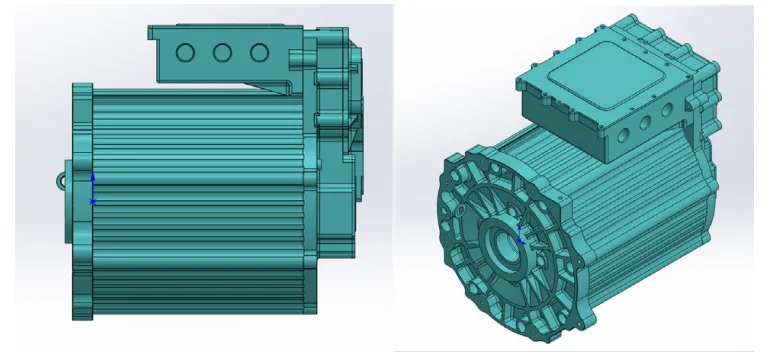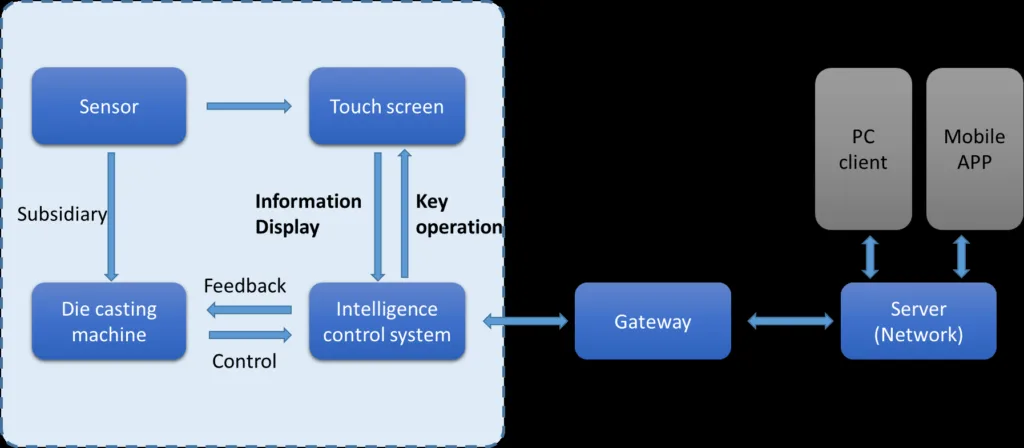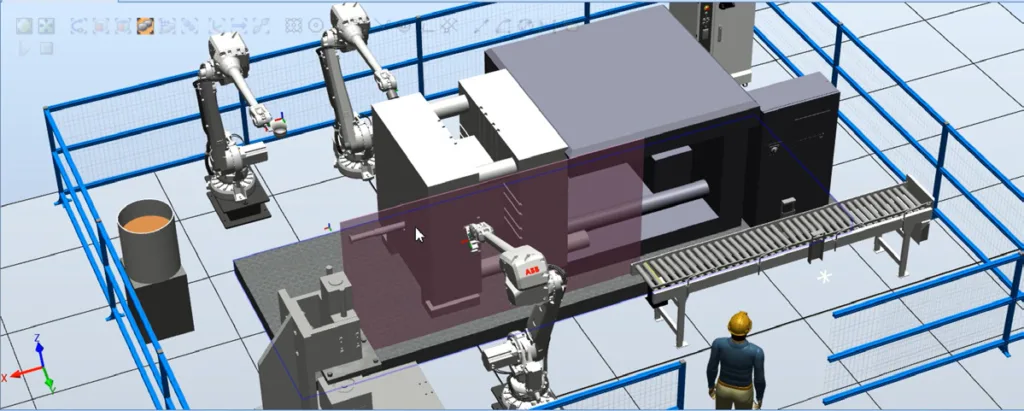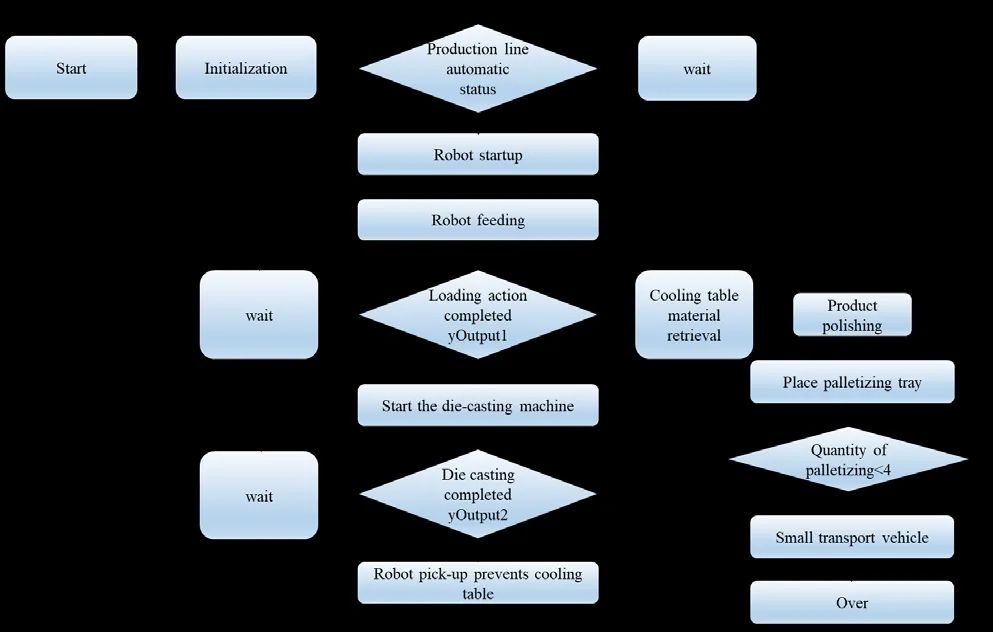この紹介論文は、[Journal of Computers]誌に掲載された["新エネルギー車モーターシェルダイカスト自動生産ラインの設計と生産スケジューリングの最適化"]論文の研究内容です。

1. 概要:
- タイトル: 新エネルギー車モーターシェルダイカスト自動生産ラインの設計と生産スケジューリングの最適化 (Design of Automated Production Line and Optimization of Production Scheduling for Die Casting of New Energy Vehicle Motor Shell)
- 著者: Yan Lu, Da-Lei Zhang, and Hao-Sheng Lu
- 出版年: 2025年
- 掲載ジャーナル/学会: Journal of Computers
- キーワード: 電気モーターケーシング、統合ダイカスト、粒子群最適化アルゴリズム、生産スケジューリング (electric motor casing, integrated die casting, particle swarm optimization algorithm, production scheduling)
2. 要約 (Abstract)
本論文では、新エネルギー車駆動モーターの生産において、ダイカストアイランドを生産の中核とし、ハンドリングおよび搬送プロセスにロボットモジュールを追加することで、ダイカストアイランド周辺の自動化プロセスを改善し、生産プロセス全体の自動ローディングおよびアンローディングを実現します。次に、生産オーダーの要件に基づいて、モーターオーダーの生産プロセス全体の最適化をスケジューリングの目標とします。スケジューリングサブバッチによる生産順序の最適化を行い、金型交換コスト、保管コスト、スープ交換ロボットアームの待機時間からなる複合生産コストを、ダイカスト工場の生産スケジューリング最適化の目的関数として設定します。最適解の求解に関しては、シミュレーテッドアニーリングアルゴリズムを粒子群アルゴリズムに統合し、改良された粒子群アルゴリズムを用いて目的関数を最適化します。最後に、生産中のダイカストマシンとオーダー数をシミュレーションし、本論文のスケジューリングアルゴリズムの有効性を検証します。
3. 研究背景:
研究テーマの背景:
新エネルギー車は、世界の自動車産業の主要な方向性です。電気駆動システムは、新エネルギー車の重要なコンポーネントです。駆動モーターは、車両の動力性能を決定するコアコンポーネントです。モーターハウジングは、駆動モーターの主要な構成要素構造です。
先行研究の現状:
新エネルギー車駆動モーターハウジングの統合ダイカスト成形プロセスに関する研究は比較的少ないです。先行研究では、生産レイアウト、アルミニウム溶湯の数値シミュレーション、ダイカストプロセスパラメータ、およびインテリジェントユニットの設計に焦点を当てています。硬度を向上させるための埋め込み鋼スリーブに関するいくつかの研究があります。[6, 7, 8, 9, 10]
研究の必要性:
既存の駆動モーターハウジングのダイカスト生産は、生産ラインの設計、生産効率、および製品品質の改善が必要です。
4. 研究目的と研究課題:
研究目的:
新エネルギー車駆動モーターハウジングのダイカスト生産ラインを設計し、生産ライン設計の合理性と、生産プロセス全体の生産効率および製品品質の改善を研究すること。
主要な研究:
- ダイカストアイランドを中心とした自動化ダイカストシステム生産ラインを設計する。
- 金型交換、保管、およびスープ交換ロボットアームの待機時間を含む生産コストの数学的モデルを開発する。
- 改良された粒子群アルゴリズムを用いて最適なスケジューリング計画を設計する。
- シミュレーションを通じてコスト削減効果を検証する。
5. 研究方法
本研究では、設計、モデリング、シミュレーションを組み合わせて使用します。
- 研究設計: ダイカストアイランドに焦点を当て、ロボットモジュールを統合した自動化生産ラインのシステム設計。
- データ収集: 実際のオーダーデータとダイカストアイランド番号をパラメータとして使用します。
- 分析方法: 改良された粒子群最適化アルゴリズム(シミュレーテッドアニーリングを統合)を用いて目的関数(複合生産コスト)を最適化します。
- 研究範囲: 新エネルギー車モーターシェルのダイカスト、自動化と生産スケジューリングに焦点を当てます。
6. 主要な研究結果:
主要な研究結果と提示されたデータ分析:
- ダイカストアイランドを中心とした自動化生産ラインの設計が作成されました(Fig. 2)。
- Siemens PLC、モデルS7-1200を用いて制御システムフレームワークを設計しました(Fig. 3)。
- インターネット制御システムフレームワークを設計しました(Fig. 4)。
- 金型交換コスト(Eq. 2)、保管コスト(Eq. 3)、スープ交換ロボットアームの待機時間(Eq. 4, 5, 6)を考慮した生産スケジューリングの数学的モデルを確立しました。
- 改良された粒子群最適化アルゴリズムが開発されました(Fig. 7)。
- シミュレーション結果は、スケジューリングアルゴリズムの有効性を示しました(Fig. 10)。




図表リスト:
- Fig. 1. Structure of die-casting motor (ダイカストモーターの構造)
- Fig. 2. Functional layout of the overall production line (生産ライン全体の機能レイアウト)
- Fig. 3. Industrial internet of things architecture framework diagram (産業用モノのインターネットアーキテクチャフレームワーク図)
- Fig. 4. Schematic diagram of the overall framework structure of the system (システム全体のフレームワーク構造の概略図)
- Fig. 5. Time error table for mold replacement (金型交換の時間誤差表)
- Fig. 6. Completion time, delivery date, and delay diagram (完了時間、納期、遅延図)
- Fig. 7. Algorithm flow chart (アルゴリズムフローチャート)
- Fig. 8. Production line design structure (生産ライン設計構造)
- Fig. 9. System flow chart (システムフローチャート)
- Fig. 10. Schematic diagram of algorithm iteration effect results (アルゴリズム反復効果結果の概略図)
7. 結論:
主要な結果の要約:
本論文では、モーターハウジングのダイカスト用自動生産ラインの包括的な設計と最適化を提示します。改良された粒子群アルゴリズムを用いて、自動化、生産スケジューリング、およびコスト最適化を扱います。
研究結果の要約、研究の学術的意義、研究の実用的意義:
本研究は、新エネルギー車モーターハウジング用のダイカスト生産ラインを自動化および最適化するための実用的なソリューションを提供します。自動化、スケジューリング最適化、およびコスト削減戦略を統合することにより、この分野に貢献します。改良された粒子群アルゴリズムは、製造業における複雑なスケジューリング問題を解決するための貴重なツールを提供します。
8. 参考文献:
- [1] J.-T. Zhai, Analysis of Development Status and Prospect of New Energy Vehicles, Automobile Applied Technology 48(20)(2023) 193-198.
- [2] X.-H. Wang, D.-X. Gao, Design of Test and Analysis System for Electric Vehicle Driving Motor, Automation & Instrumentation 38(11)(2023) 7-12.
- [3] X.-J. Bai, Z.-Y. Zhu, Driving Innovation: China's NEV Development Model and Future Outlook, China Economist 19(6)(2024) 31-57.
- [4] X.-W. Wang, M.-L. Wang, C.-Y. Kang, W.-H. Xu, L.-Y. Li, Analysis of Machining Process and Fixture Design for the Motor Case of New Energy Vehicles, Development & Innovation of Machinery & Electrical Products 37(3)(2024) 53-56.
- [5] T.-R. Luo, Z.-Z. Fan, H.-X. Hu, J.-H. Wang, Y.-Z. Tian, Research Status and Development Trend of Integrated Die-casting Aluminum Alloy for New Energy Vehicles, Special Casting & Nonferrous Alloys 43(11)(2023) 1472-1478.
- [6] L.-H. Tao, X.-C. Chi, D.-W. Gu, Optimal Scheduling of Automatic Die Casting Production Line Based on Improved PSO, Mechanical Engineer (9)(2021) 4-7+10.
- [7] H.-T. Xiao, J.-Q. Liao, W.-J. Guan, H. Liu, J.-H. Gu, Die Casting Process for the New Energy Motor Shell, Foundry Equipment & Technology (5)(2022) 8-12+25.
- [8] J. Liu, X.-M. Wang, H.-H. Liu, Z.-J. Zhou, Study on sand mold gravity gating system for box type magnesium alloy castings, World Nonferrous Metals (10)(2022) 178-180.
- [9] X.-D. Huang, T. Chang, F.-L. Wei, Design and Research of Intelligent Die Casting Unit, Foundry Equipment & Technology (6)(2019) 48-52.
- [10] F.-Z. Deng, F. Zhong, X. Zhao, J. Cai, A Kind of Optimization Design of New Energy Automobile Motor Side Shell Embedded Steel Bushing Design in the Die-casting Mould, China Southern Agricultural Machinery 53(19)(2022) 25-28.
- [11] X. Ji, L.-J. Liu, Z.-X. Jia, J.-Q. Li, D.-H. Liao, J. Fang, Numerical Simulation of Die Casting Process for Motor Housing and Prediction of Thick Wall Defects, Special Casting & Nonferrous Alloys 44(5)(2024) 708-712.
- [12] H.-Z. Li, W.-Z. Si, J.-J. Cao, Y.-S. Feng, H.-W. Zhang, H. Ruediger, Design and simulation of a handling robot for wheel-hub die casting, Manufacturing Technology & Machine Tool (8)(2021) 85-90+96.
- [13] P. Wang, H. Yu, S.-L. Zhang, Optimal Design of New Energy Vehicle Drive Motor Shell and Iron Core Interference, Auto Electric Parts (10)(2024) 16-17+21.
- [14] M. Cong, C.-Q. Lu, D. Liu, Q.-Y. Xiao, R.-D. Li, Detection method for tiny defects in casting appearance based on Refine-ACTDD, Computer Integrated Manufacturing Systems 28(9)(2022) 2815-2824.
- [15] H.-J. Zhou, Y.-T. Wu, Y.-L. Zhao, H.-Y. Liu, S. Zhang, Die Casting Process Analysis and Defect Improvement of Clutch Housing, Special Casting & Nonferrous Alloys 43(5)(2023) 717-720.
- [16] F. Tian, G.-X. Wang, J.-Q. Zhou, Study on optimization of development process for body integration structure based on high pressure die casting process, Die & Mould Industry 49(8)(2023) 17-23.
- [17] D. Gao, K. Duan, X.-C. Li, X. Wang, Analysis on Technological Characteristics of Automatic Casting Production Line, Heavy Casting and Forging (1)(2024) 18-22.
- [18] Z.-T. Liu, A Multi-machine Batch Scheduling Method Based on the Improved Particle Swarm Algorithm, Progress in Textile Science & Technology 46(5)(2024) 18-24.
- [19] X.-Y. Le, J.-G. Yu, Research on Solving Job-shop Scheduling Problem Based on Improved NSGA-II Algorithm, Mechanical & Electrical Engineering Technology 53(1)(2024) 110-114+197.
- [20] Q.-Q. Liu, H.-L. Yang, Y. Zhang, Batch production scheduling considering time window and deterioration effect, Systems Engineering-Theory & Practice 44(6)(2024) 2033-2045.
9. 著作権:
- この資料は、「Yan Lu, Da-Lei Zhang, and Hao-Sheng Lu」の論文「Design of Automated Production Line and Optimization of Production Scheduling for Die Casting of New Energy Vehicle Motor Shell」に基づいています。
- 論文出典: https://doi.org/10.63367/199115992025023601018
この資料は上記論文を紹介するために作成されたものであり、商業目的での無断使用を禁じます。Copyright © 2025 CASTMAN. All rights reserved.